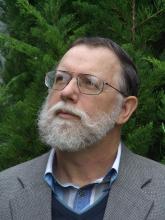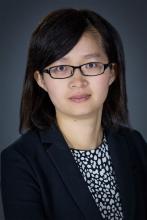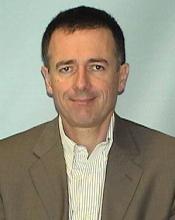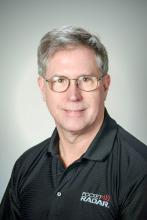The Humble Electric Motor, Enabling Science and Technology

Mr. Richard Halstead
Founder, President, and Chairman
Empire Magnetics Inc.
Thu, 09/21/2017
Abstract - The nether world between the electrical and mechanical is seldom seen. But bridging that gap is necessary to enable new technology. Consider: Motorized CATS scanner hatch covers exterior to the International Space station, Gas Sampling the Moon Titan, deep sea robotics, Oil well motors 15,000 FT deep, +150 C, 20,000 PSI pressure, Valve actuators for liquid oxygen and liquid methane for the new Mars vehicle, Beam lines with both vacuum and radiation requirements, Jet engine test stands aboard aircraft carriers. In addition to mechanical and electrical issues, the magic of magnets, material considerations, thermal issues, bearing designs, lubrication science, wire insulations and more must be addressed, all within some cost constraints. This talk will cover a range of projects that have been completed, with an overview of the application challenges, and insight as to how they were met.
Mr. Richard Halstead is the Founder, President, and Chairman of Empire Magnetics Inc., providing electric motors for challenging environments since 1987. He comes with many achievements including Head of Wind-Sail Vertical Axis Wind Turbines designed by Scientists at the Russian State Rocket Center funded by US DOE, LBNL to prevent WMD scientists from working for Al Qaeda, CTO of Power Tree Corporation, a flywheel energy storage company, CTO of Biomass2bioenergy, Director of North Bay World Trade Association, Parker Hannifin Compumotor Division, Western Regional Sales Manager, Linear motor product manager, Manager of Special projects department, Applications Engineer. He was a Programmer, Test Equipment engineer for early hard drives at IBM, and Technical Operations Officer for CIA, (Cold war spy), USAF Radio Communications repair, including hot war duties in Viet Nam. Rick holds B.S. in Industrial Technology, Fresno State University, and holds multiple patents.
Practical Aspects of Modeling Complex Analog Behavior in Modern Circuit Simulators

Dr. Marek Mierzwinski
R&D Engineer
Device Model Development, EEsof Division, Keysight Technologies
Thu, 09/07/2017
Abstract – Analog simulators allow complex behavior to be modeled and are a critical part of Computer-Aided-Design (CAD) tools used by designers to predict circuit performance. Early generations of simulators were inseparable from the specific transistor models integrated in their program. Resource-limited commercial simulator vendors would pair off with university and industry groups to add select models to their simulators while designers were restricted to simulators that support the models that they needed. Custom simulator interfaces were never successful as these interfaces were often quite complex – and each vendor’s interface was unique, so the effort had to be repeated for each. Model developers realized that hardware description languages (HDLs) such as Verilog, with a few changes, could provide a simple and portable way to implement complex model equations. This talk will describe how this standardized subset, Verilog-A, has changed the way “compact” transistor models are developed. We will illustrate how easy it is for anyone to create a model, not just for electrical simulation, but for any analog behavior. It is now possible – and has been demonstrated – for individual developers to invent models with as much influence on the industry as models coming from large university research groups. (Dr. Marek Mierzwinski's Slides)
Dr. Marek Mierzwinski is an R&D engineer at Keysight Technologies. He started at Hewlett Packard as a product engineer in the fab, then an R&D project manager responsible for their first modulation doped FET IC. He later moved to EEsof division and was R&D project manager for the analog circuit simulator. In 2002 he co-founded Tiburon Design Automation, which developed the industry’s first Verilog-A compiler that could be used by different commercial simulators. Marek graduated with a B.S. in Engineering Physics from Cornell and received his Masters and Ph.D. from Stanford in Electrical Engineering.
Power Electronics, Electric Motor Drives, MACAUTO

Dr. Yin Ye
Assistant Professor
EE Dept, San Francisco State University
Thu, 04/20/2017
Abstract – This talk will mainly focus on challenges and enabling solutions of electric motor drives in electric vehicles (EVs), hybrid electric vehicles (HEVs) and Plug-in hybrid electric vehicles (PHEVs). Switched reluctance machine has recently emerged as a possible cost-effective propulsion solution in EVs, HEVs and PHEVs due to its simple and rugged structure, its extendedspeed constant-power range, fault-tolerant capabilities and lack of permanent magnets in its configuration. However, it suffers from high torque ripples and high acoustic noise due to strong nonlinearity of the machine, which impedes its penetration to electrified transportation. In this talk, two novel control methods for torque ripple reduction in switched reluctance machine will be discussed, both of which are validated to reduce the torque ripples significantly over the wide speed range in both linear magnetic and saturated magnetic region. The effect of mutual flux on rotor position estimation of switched reluctance machine is also investigated and two methods will be introduced to eliminate the mutual flux effect on rotor position estimation of switched reluctance machines without a prior knowledge of the mutual flux profiles. In addition, a fast electro-thermal model for the online and offline junction temperature estimation of power modules in EVs, HEVs and PHEVs will be introduced, which can provide fast and accurate temperature estimation for temperate protection and lifetime evaluation.
Dr. Jin Ye is currently an assistant professor of electrical engineering at San Francisco State University, San Francisco, CA, United States. From 2014 to 2015, she worked as a postdoctoral research associate at the McMaster Institute for Automotive Research and Technology (MacAUTO), McMaster University, Hamilton, Ontario, Canada. She received the B.S. and M.S. degrees in electrical engineering from Xi’an Jiaotong University, Xi’an, China, in 2008 and 2011, respectively. She also received her Ph.D. degree in electrical engineering from McMaster University in 2014. She has authored/coauthored more than 30 top journal and conference papers, and has five US/Canadian patents pending. She is also the recipient/co-recipient of several awards including Development of Research and Creativity Award (2015), and Chrysler Innovation Award (2014). She is an associate editor for IEEE Transactions on Transportation Electrification and serves in technical committees for several conferences. Her main research areas include power electronics, electric motor drives, renewable energy conversion and electrified transportation.
Why We Invest in Startups

Dr. Patrick Pfeffer
Sr. Director of Growth Strategy and Venture Investments
Juniper Networks
Thu, 04/06/2017
Abstract – Juniper Networks is a networking equipment vendor based in Sunnyvale, CA. Since its creation in 1996 and IPO in 1999, Juniper has been an active strategic corporate venture investor to accompany its organic growth. The talk will provide an overview of why, where and how Juniper invest in startups.
Dr. Patrick Pfeffer is Senior Director of Growth Strategy and Venture Investments at Juniper Networks where he spends most of his days thinking about the future of the Internet. Since joining Juniper in 2008 he has led Juniper's packet optical strategy and has developed the concept of next generation central office. Before joining Juniper, Patrick was a managing director for Detecon a management consulting firm, he worked also for Alcatel on access networks, for Gluon Networks on VoIP, and for Qwest on IPTV. Patrick started his career over 20 years ago as a professor at the University of Colorado in Boulder. He holds Ph.D. degree in computer science from Paris University.
Starting a Successful Tech Company

Mr. Chris Stewart
President/COO & Co-Founder
Pocket Radar & Invention Planet
Thu, 03/09/2017
Abstract – There are many different ways to get a new startup company off the ground and you can rest assured that all of them are difficult. Some statistics indicate that over 90% of all startups fail. Finding a clear path to success can be very challenging. All of the different aspects of the technology, the business model, the relationships and new product development need to work together very well. This presentation reviews the real world entrepreneurial journey of a startup company from idea to proof of concept, building the team, design, marketing, manufacturing, testing, and the total product life cycle.
Mr. Chris Stewart is an inventor, engineer and entrepreneur. He holds 5 granted patents with more pending. He started his first entrepreneurial enterprise at 14 and his engineering career at age 17 as the Chief Engineer of WATH/WXTQ radio. After earning a BSEE from The Ohio State University, he worked at Hewlett Packard and Agilent Technologies for 25 years where he gained extensive experience in R&D, Manufacturing, Marketing, and Business Management. Chris led multiple intrapreneurial teams to start several new businesses before striking out as an entrepreneur by co-founding Invention Planet, LLC and Pocket Radar Inc. Chris also spends his time teaching and mentoring students in engineering and entrepreneurship.